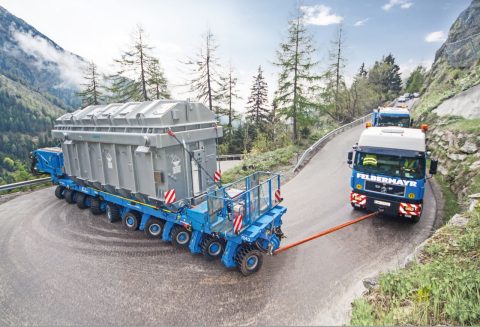
ESTA: heavy transport reform proposal up for a vote
The proposal for reform and harmonisation of the rules governing heavy transport and abnormal loads throughout the European Union is up for a vote on February 14. Put forward by ESTA – the European Association of Abnormal Road Transport and Mobile Cranes, the proposals are currently before the Transport and Tourism (TRAN) Committee of the European Parliament which is due to vote on them on February 14.
They include the long-awaited Europe-wide adoption of the standard SERT documentation for abnormal load vehicle registration – a move that ESTA has supported for many years. SERT, the Special European Registration for Trucks and Trailers, is intended to reduce the paperwork and bureaucracy faced by the industry. It formed part of the European Best Practice Guidelines for Abnormal Road Transport, first published in a European Commission Transport Directive back in 2005 but only adopted by a small number of member states.
Read also: ESTA steps up lobbying efforts for heavy transport reform
ESTA understands that other proposals currently tabled for adoption by the TRAN Committee are:
- a ‘one stop shop’ per country for permits
- standardised permit application forms
- use of electronic permits
- harmonisation of escorting rules and vehicle markings
- a ban on language requirements for drivers
- permitting systems to be available in all EU languages
The proposals are contained in amendments to the EU’s Weights and Dimensions Directive that is currently being revised.
The Weights and Dimensions Directive establishes the maximum authorized dimensions of heavy-duty vehicles (HDVs) used in national and international commercial transport, as well as the maximum authorized weights of HDVs used in international commercial transport. This ensures fair competition among member states, as they cannot limit the circulation of vehicles that comply with these limits from performing international heavy transport operations within their territories.
Read also: German heavy transport woes continue, bordering on full-blown crisis
Under the revised directive, EU member states will be required to have a single access point for all information regarding national maximum authorized dimensions and weights of vehicles, as well as any restrictions, including on height, in specified areas or on specific roads. Additionally, the European Commission will establish a web portal that contains all the above information about heavy transport regulations, along with details of routes that can be used by vehicles transporting indivisible loads.
ESTA Director Ton Klijn said “There is a long way to go yet before our proposals are adopted – but our arguments and our industry are being taken more seriously than at any time in the recent past. We are cautiously optimistic that there is broad agreement in the TRAN Committee across the political spectrum concerning the regulations on indivisible loads.”
“But after that, however, the proposals go into a process of consultation between the European Council, Parliament and Commission, so there is a lot of work still to do,” Klijn said.
As a result, ESTA is asking its members to lobby their own national representatives to ensure that they are fully aware of the issues and have all the information they need to support its proposals.
You just read one of our premium articles free of charge
Register now to keep reading premium articles.




